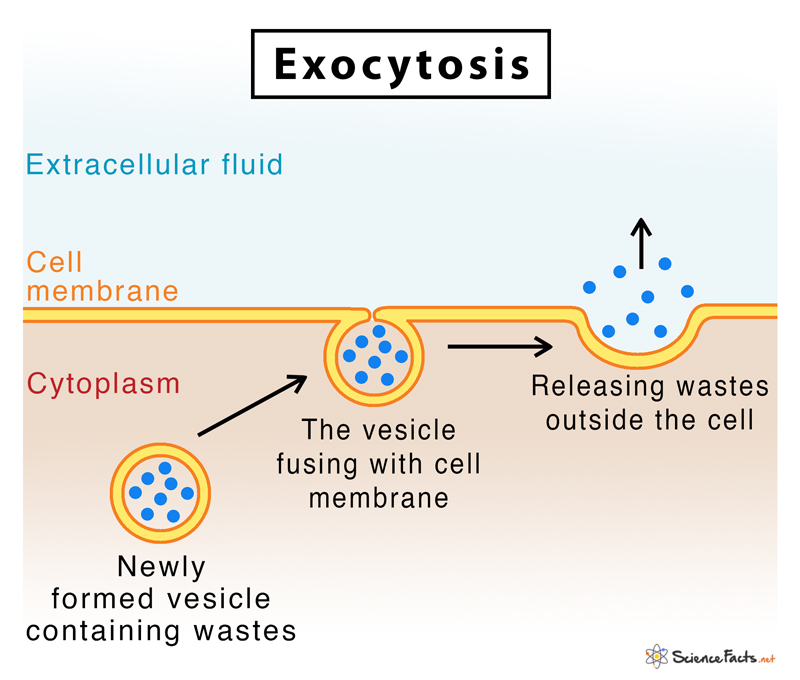Examples of Cells Where Exocytosis Happens It occurs in all living cells, from invertebrates and protozoa to plants and human.
What Types of Materials are Expelled from Cells During Exocytosis
Large and complex protein molecules like enzymes, peptide hormones, and antibiotics are regularly released through this energy-dependent process.
Steps Involved in Exocytosis
The entire process gets completed in the following five key steps: Step 1: Vesicle Trafficking: The first step of exocytosis during which the secretory vesicle move from their spot of creation to the cell membrane. This is an energy-consuming step. Step 2: Vesicle Tethering: On reaching the cell membrane, the outgoing vesicle becomes linked to, and is pulled into close contact with the cell membrane. Step 3: Vesicle Docking: The vesicle then gets transiently attached to the cell membrane, with its own membrane beginning to merge with the latter. Step 4: Vesicle Priming: In some cases of exocytosis, during the merging of the two membranes, the cell membrane undergoes specific modifications that further stimulate the process. Step 5: Vesicle Fusion: This is the final step during which the process of fusion gets completed with the help of a special protein called SNARE (SNAp REceptor proteins). What Happens to the Membrane of a Vesicle After Exocytosis In most cases, after the completion of exocytosis, the secretory vesicle cannot be recovered in its full form to be reused, as it has permanently bonded with the cell membrane. For example, in non-constitutive exocytosis of neurons, the vesicle cannot be reused. In some other cases, such as the ‘kiss’ and ‘run’ fusion in the neurons of the hippocampus structure, the vesicle transiently attaches to the cell membrane, allowing a partial deposit of its vesicular content. The vesicle is further reused when they float back into the intracellular space only to return to the membrane for releasing the rest of its contents. In the pancreas, a cluster of cells called islets of Langerhans secretes the hormones glucagon and insulin. These hormones are stored within secretory granules and are released into the blood by exocytosis, thus maintaining blood sugar level. Exocytosis from other cells in the pancreas releases digestive enzymes into the gut. 2.Cell-to-cell communication Communication between neurons through the transmission of chemical signals called neurotransmitters occurs through exocytosis. The neurotransmitters are stored in vesicles and lie next to the cytoplasmic face of the plasma membrane. When the appropriate signal is given, the vesicles having the neurotransmitters make contact with the cell membrane and secrete their contents into the space between the two neurons. This allows the adjacent neuron to receive those neurotransmitters. 3. Maintaining homeostasis Cellular waste products or toxins are regularly removed from the cell by exocytosis. The byproducts of aerobic respiration, such as water and carbon dioxide, are also removed from the cell by exocytosis. 4. Maintaining body defense Immune cells such as macrophages engulf foreign microorganisms such as viruses, which are then destroyed and removed through exocytosis. This prevents body cells from being infected.
